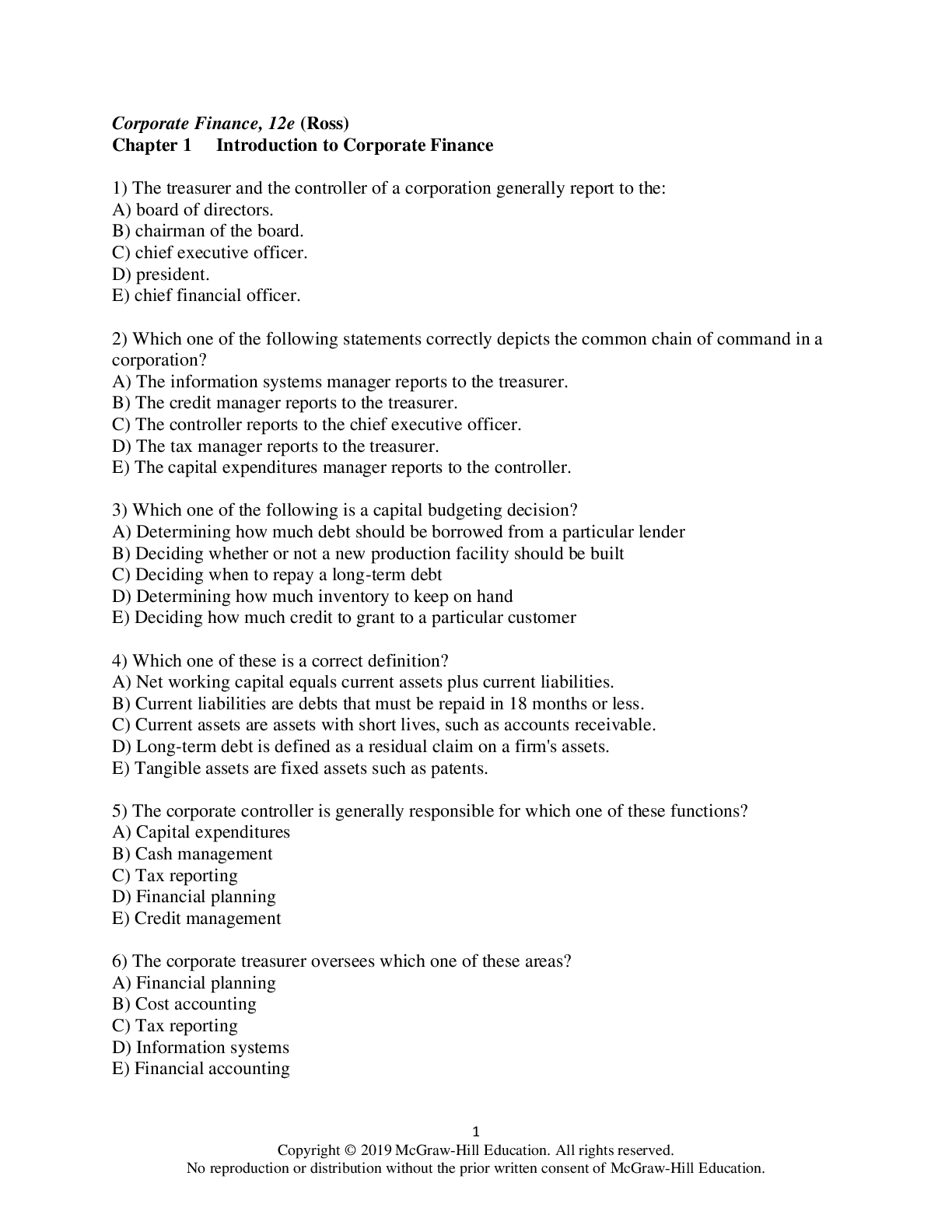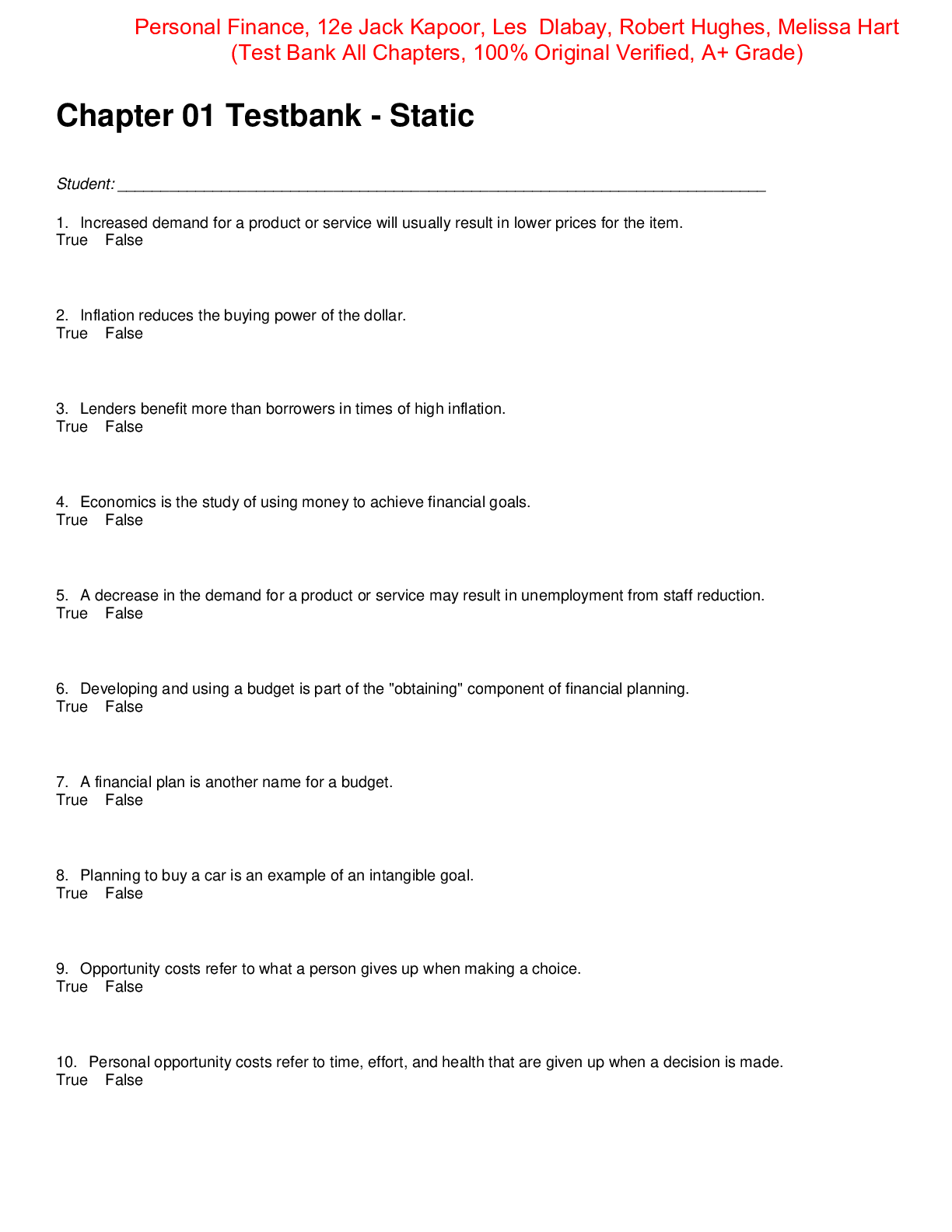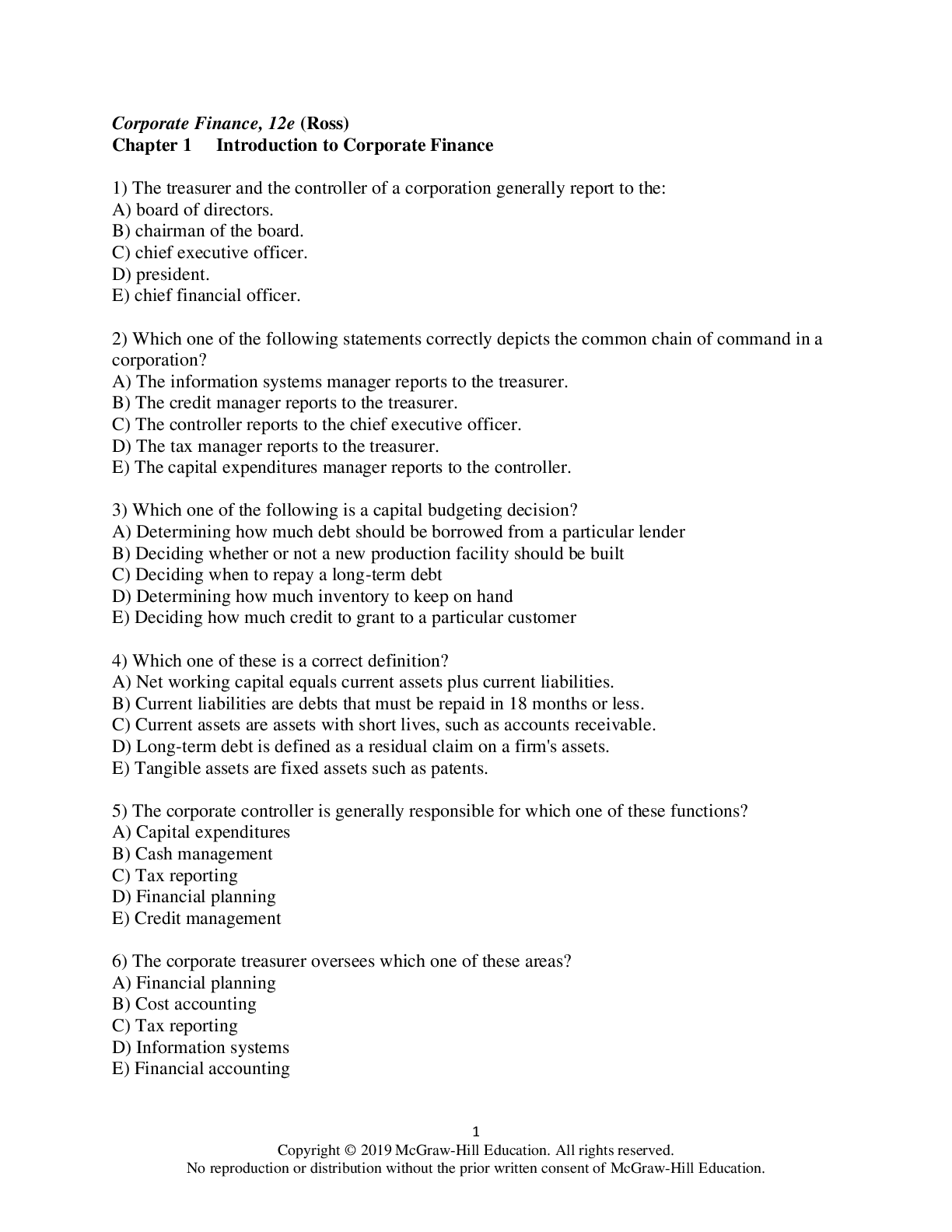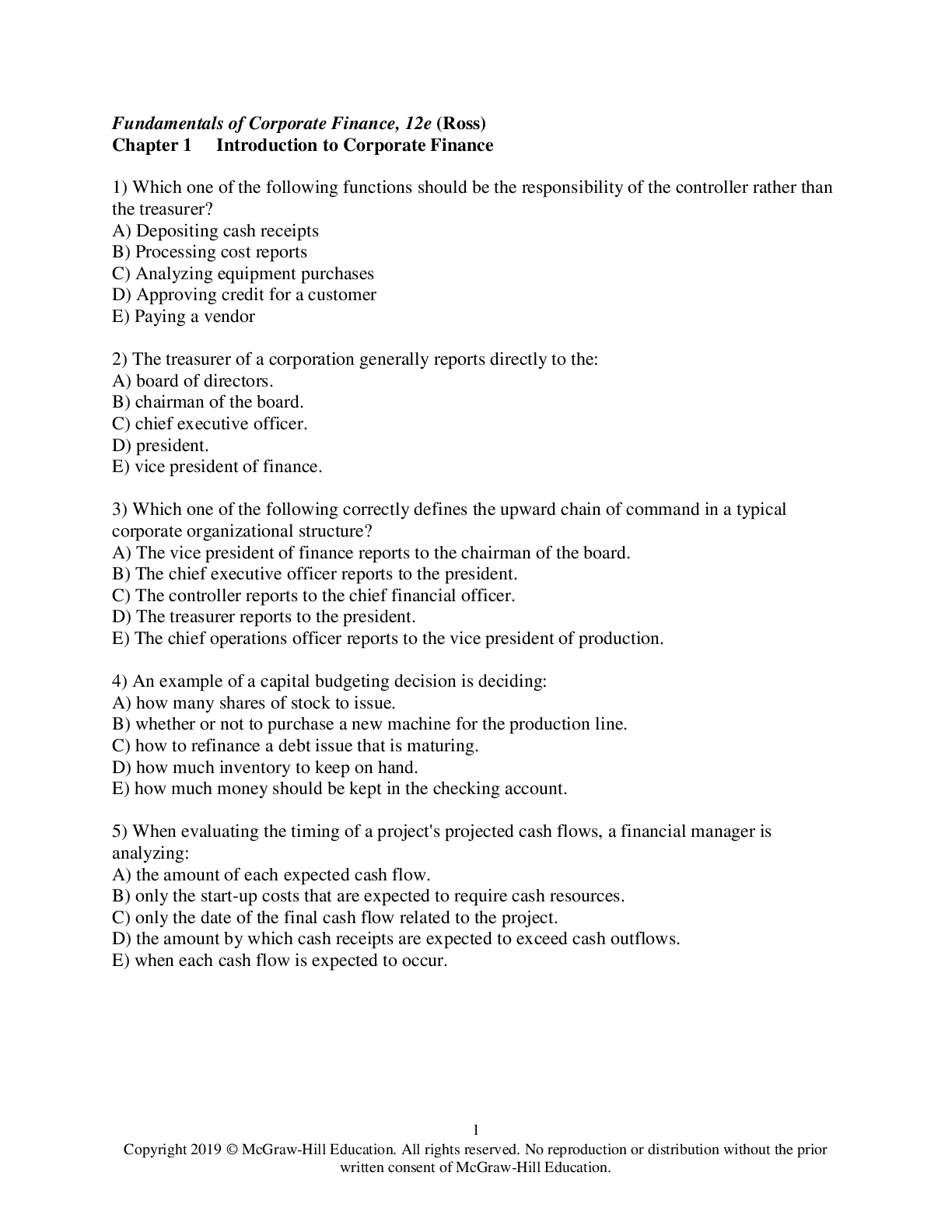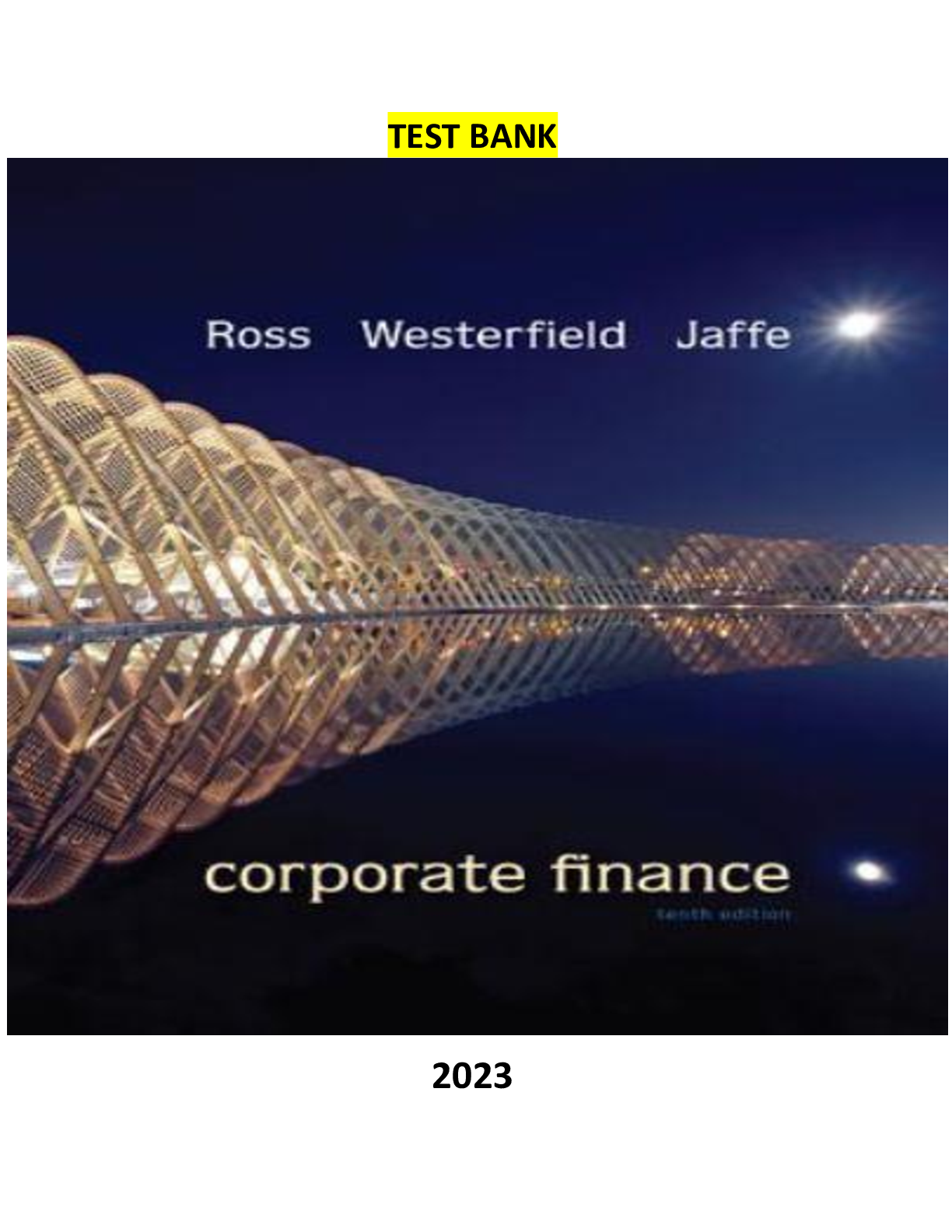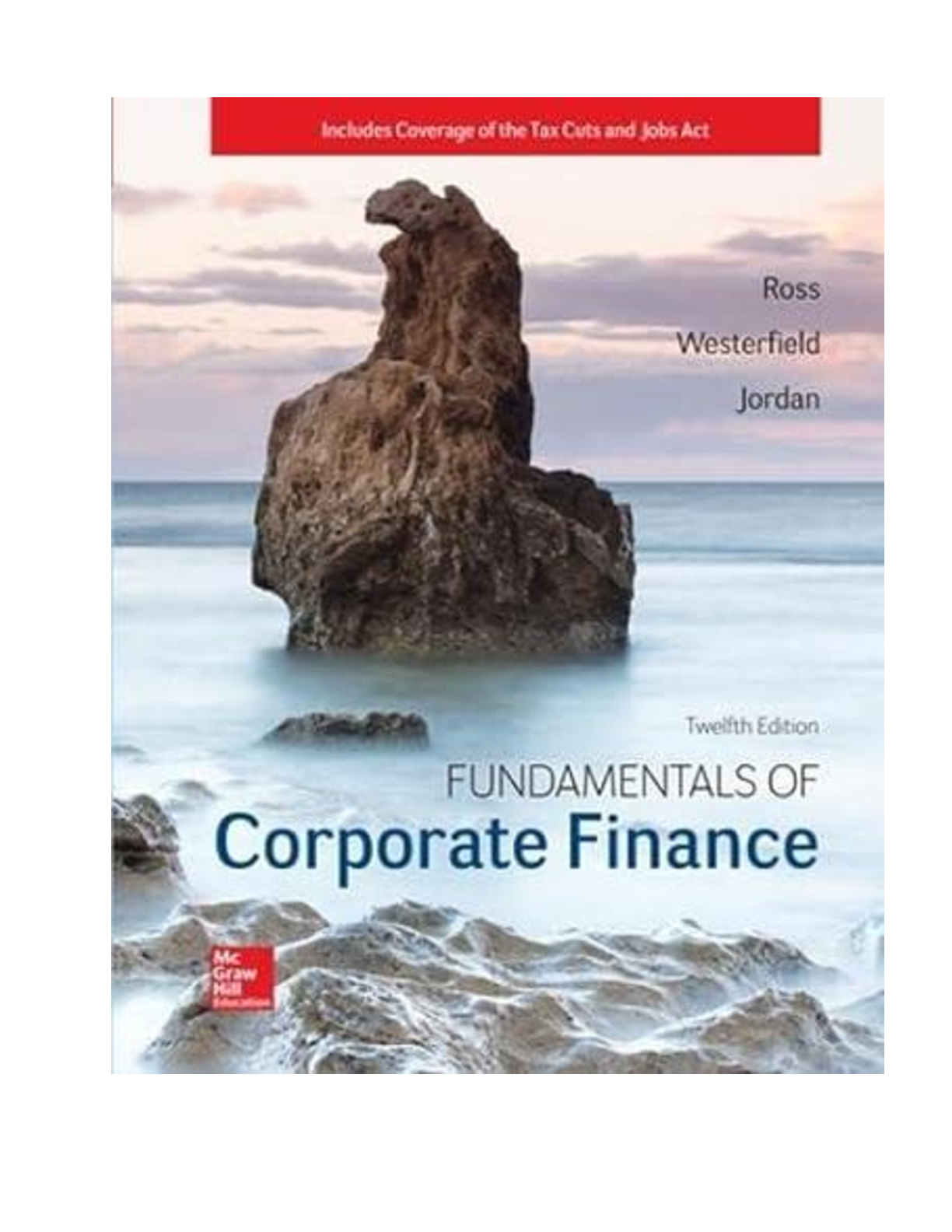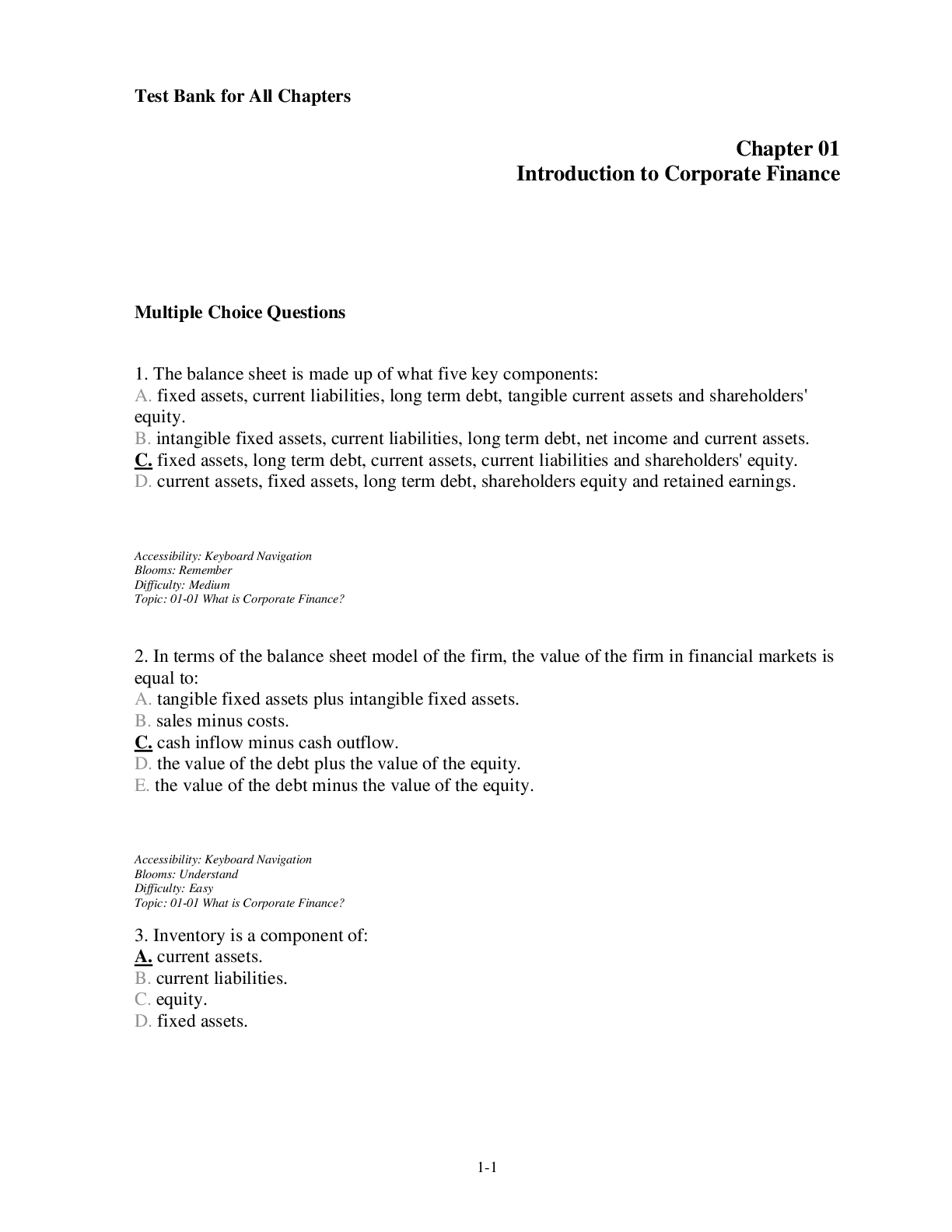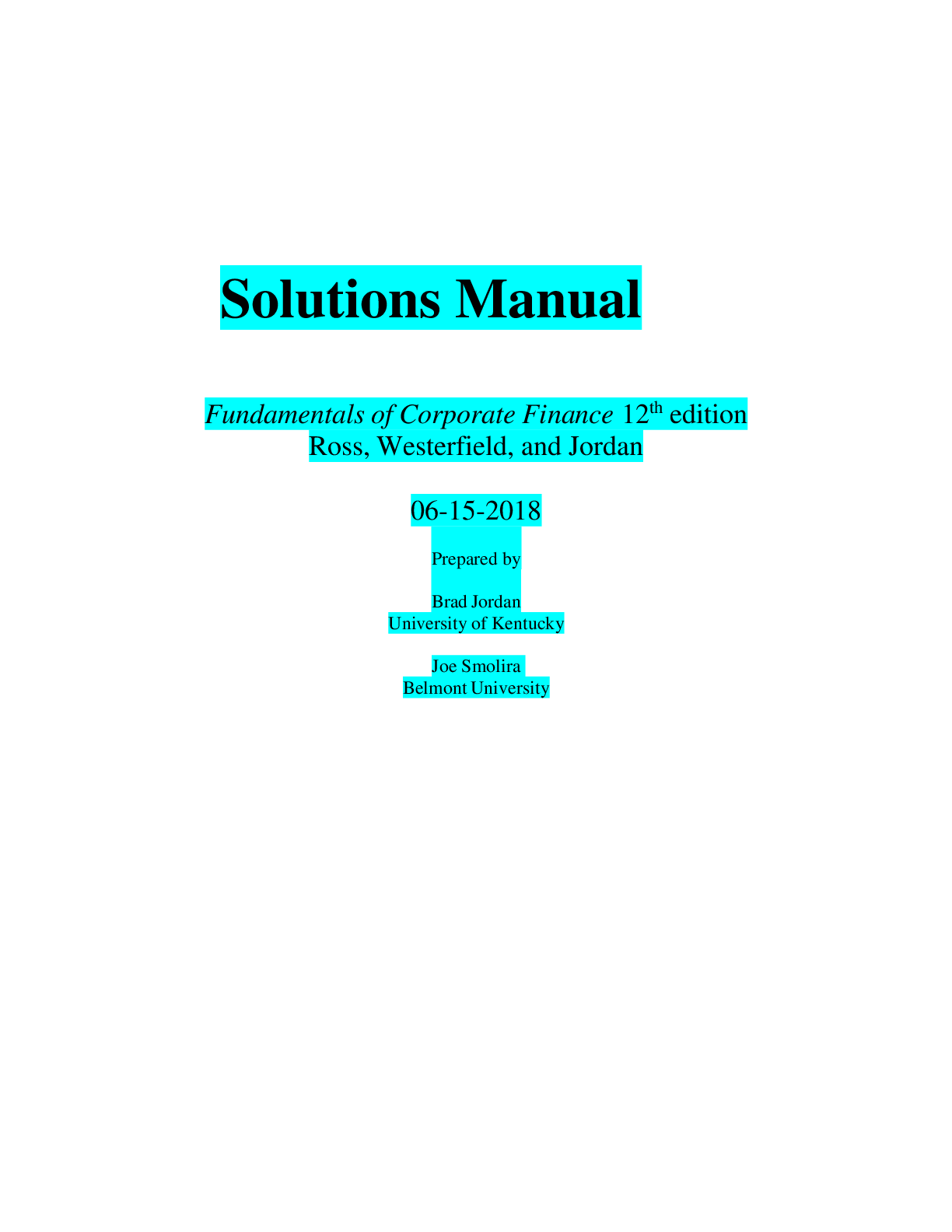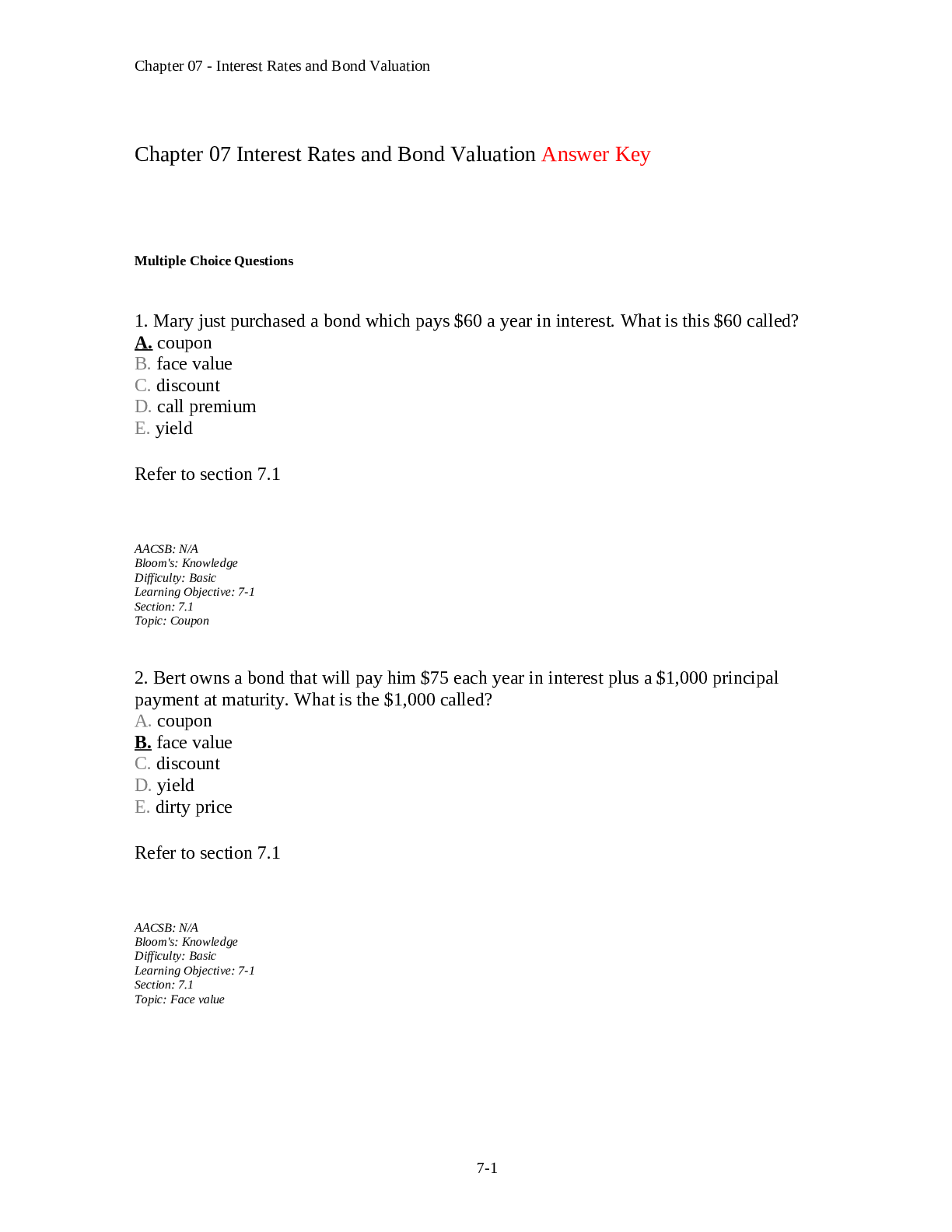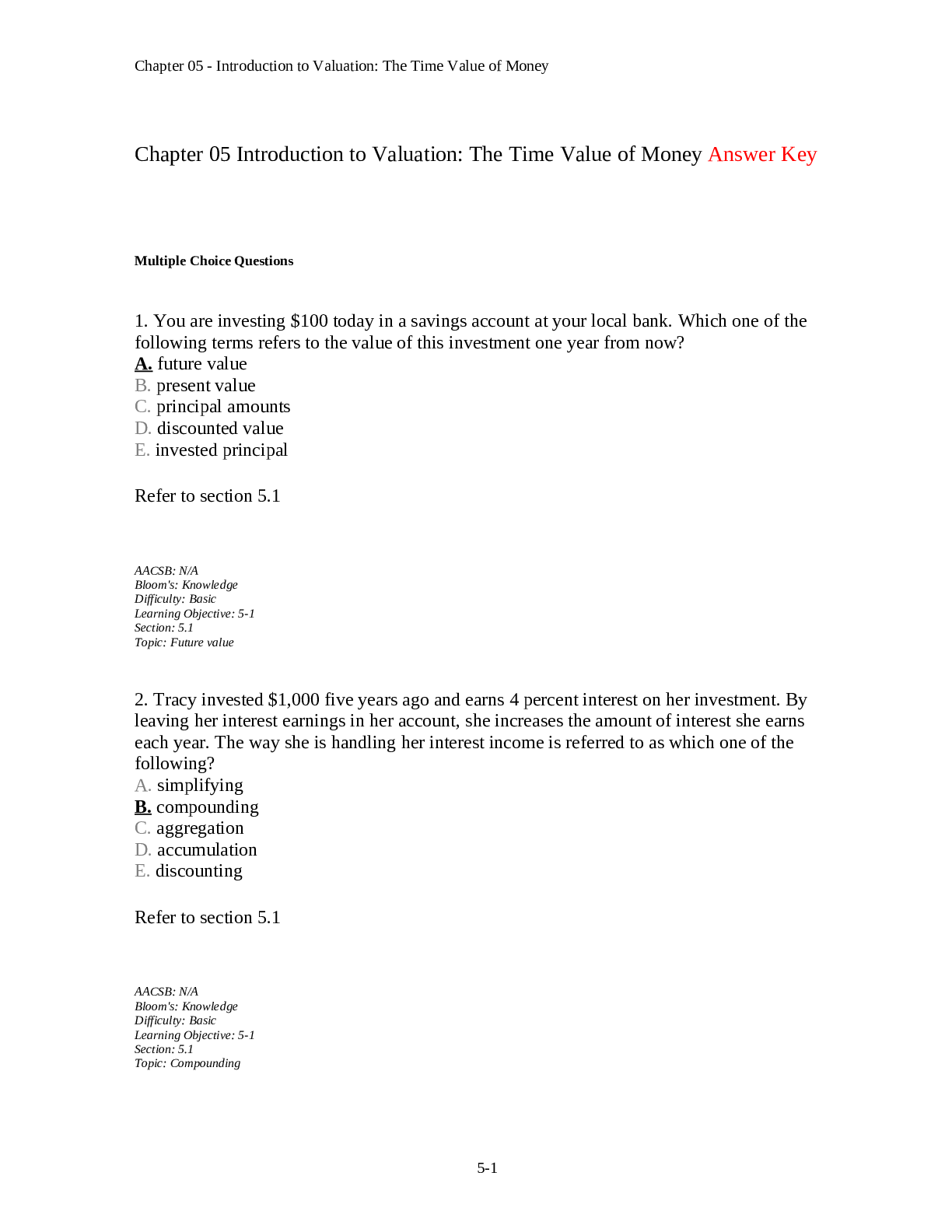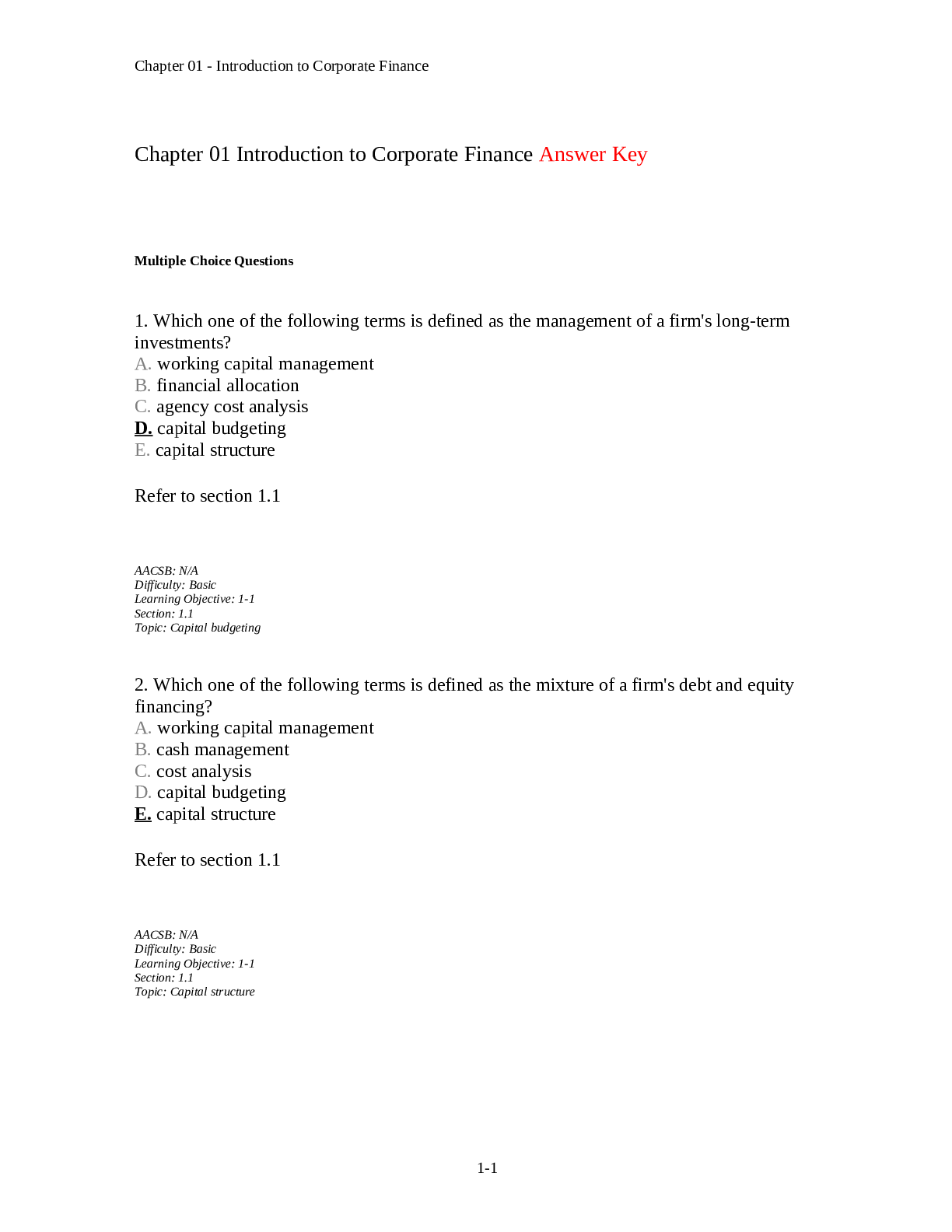Finance > TEST BANK > [Test Bank]Corporate Finance 12th Edition By Stephen Ross, Randolph Corporate Finance, 12e (Chapter (All)
[Test Bank]Corporate Finance 12th Edition By Stephen Ross, Randolph Corporate Finance, 12e (Chapter 4) Long-Term Financial Planning and Growth Answer Key
Document Content and Description Below
Chapter 04 Long-Term Financial Planning and Growth Answer Key Multiple Choice Questions 1. Phil is working on a financial plan for the next three years. This time period is referred to as which one... of the following? A. financial range B. planning horizon C. planning agenda D. short-run E. current financing period Refer to section 4.1 AACSB: N/A Difficulty: Basic Learning Objective: 4-1 Section: 4.1 Topic: Planning horizon 2. Atlas Industries combines the smaller investment proposals from each operational unit into a single project for planning purposes. This process is referred to as which one of the following? A. conjoining B. aggregation C. conglomeration D. appropriation E. summation Refer to section 4.1 AACSB: N/A Difficulty: Basic Learning Objective: 4-1 Section: 4.1 Topic: Aggregation 4-1 Chapter 04 - Long-Term Financial Planning and Growth 3. Which one of the following terms is applied to the financial planning method which uses the projected sales level as the basis for determining changes in balance sheet and income statement account values? A. percentage of sales method B. sales dilution method C. sales reconciliation method D. common-size method E. trend method Refer to section 4.3 AACSB: N/A Difficulty: Basic Learning Objective: 4-1 Section: 4.3 Topic: Percentage of sales approach 4. Which one of the following terms is defined as dividends paid expressed as a percentage of net income? A. dividend retention ratio B. dividend yield C. dividend payout ratio D. dividend portion E. dividend section Refer to section 4.3 AACSB: N/A Difficulty: Basic Learning Objective: 4-1 Section: 4.3 Topic: Dividend payout ratio 4-2 Chapter 04 - Long-Term Financial Planning and Growth 5. Which one of the following correctly defines the retention ratio? A. one plus the dividend payout ratio B. addition to retained earnings divided by net income C. addition to retained earnings divided by dividends paid D. net income minus additions to retained earnings E. net income minus cash dividends Refer to section 4.3 AACSB: N/A Difficulty: Basic Learning Objective: 4-1 Section: 4.3 Topic: Retention ratio 6. Which one of the following ratios identifies the amount of assets a firm needs in order to generate $1 in sales? A. current ratio B. equity multiplier C. retention ratio D. capital intensity ratio E. payout ratio Refer to section 4.3 AACSB: N/A Difficulty: Basic Learning Objective: 4-1 Section: 4.3 Topic: Capital intensity ratio 4-3 Chapter 04 - Long-Term Financial Planning and Growth 7. The internal growth rate of a firm is best described as the: A. minimum growth rate achievable assuming a 100 percent retention ratio. B. minimum growth rate achievable if the firm maintains a constant equity multiplier. C. maximum growth rate achievable excluding external financing of any kind. D. maximum growth rate achievable excluding any external equity financing while maintaining a constant debt-equity ratio. E. maximum growth rate achievable with unlimited debt financing. Refer to section 4.4 AACSB: N/A Difficulty: Basic Learning Objective: 4-3 Section: 4.4 Topic: Internal growth rate 8. The sustainable growth rate of a firm is best described as the: A. minimum growth rate achievable assuming a 100 percent retention ratio. B. minimum growth rate achievable if the firm maintains a constant equity multiplier. C. maximum growth rate achievable excluding external financing of any kind. D. maximum growth rate achievable excluding any external equity financing while maintaining a constant debt-equity ratio. E. maximum growth rate achievable with unlimited debt financing. Refer to section 4.4 AACSB: N/A Difficulty: Basic Learning Objective: 4-3 Section: 4.4 Topic: Sustainable growth rate 4-4 Chapter 04 - Long-Term Financial Planning and Growth 9. You are developing a financial plan for a corporation. Which of the following questions will be considered as you develop this plan? I. How much net working capital will be needed? II. Will additional fixed assets be required? III. Will dividends be paid to shareholders? IV. How much new debt must be obtained? A. I and IV only B. II and III only C. I, III, and IV only D. II, III, and IV only E. I, II, III, and IV Refer to the introduction to chapter 4 AACSB: N/A Difficulty: Basic Learning Objective: 4-1 Section: Introduction to chapter 4 Topic: Financial planning 10. Financial planning: A. focuses solely on the short-term outlook for a firm. B. is a process that firms employ only when major changes to a firm's operations are anticipated. C. is a process that firms undergo once every five years. D. considers multiple options and scenarios for the next two to five years. E. provides minimal benefits for firms that are highly responsive to economic changes. Refer to section 4.1 AACSB: N/A Difficulty: Basic Learning Objective: 4-1 Section: 4.1 Topic: Financial planning 4-5 Chapter 04 - Long-Term Financial Planning and Growth 11. Financial planning accomplishes which of the following for a firm? I. determination of asset requirements II. development of plans to contend with unexpected events III. establishment of priorities IV. analysis of funding options A. I and III only B. II and IV only C. I, III, and IV only D. I, II, and III only E. I, II, III, and IV Refer to section 4.1 AACSB: N/A Difficulty: Basic Learning Objective: 4-1 Section: 4.1 Topic: Financial planning 12. Which of the following questions are appropriate to address during the financial planning process? I. Should the firm merge with a competitor? II. Should additional shares of stock be sold? III. Should a particular division be sold? IV. Should a new product be introduced? A. I, II, and III only B. I, II, and IV only C. I, III, and IV only D. II, III, and IV only E. I, II, III, and IV Refer to section 4.1 AACSB: N/A Difficulty: Basic Learning Objective: 4-1 Section: 4.1 Topic: Financial planning 4-6 Chapter 04 - Long-Term Financial Planning and Growth 13. Which one of the following statements concerning financial planning for a firm is correct? A. Financial planning for fixed assets is done on a segregated basis within each division. B. Financial plans often contain alternative options based on economic developments. C. Financial plans frequently contain conflicting goals. D. Financial plans assume that firms obtain no additional external financing. E. The financial planning process is based on a single set of economic assumptions. Refer to section 4.1 AACSB: N/A Difficulty: Basic Learning Objective: 4-1 Section: 4.1 Topic: Financial planning 14. You are getting ready to prepare pro forma statements for your business. Which one of the following are you most apt to estimate first as you begin this process? A. fixed assets B. current expenses C. sales forecast D. projected net income E. external financing need Refer to section 4.1 AACSB: N/A Difficulty: Basic Learning Objective: 4-1 Section: 4.1 Topic: Pro forma statement 4-7 Chapter 04 - Long-Term Financial Planning and Growth 15. Which one of the following statements is correct? A. Pro forma statements must assume that no new equity is issued. B. Pro forma statements are projections, not guarantees. C. Pro forma statements are limited to a balance sheet and income statement. D. Pro forma financial statements must assume that no dividends will be paid. E. Net working capital needs are excluded from pro forma computations. Refer to section 4.2 AACSB: N/A Difficulty: Basic Learning Objective: 4-1 Section: 4.2 Topic: Pro forma statements 16. When utilizing the percentage of sales approach, managers: I. estimate company sales based on a desired level of net income and the current profit margin. II. consider only those assets that vary directly with sales. III. consider the current production capacity level. IV. can project both net income and net cash flows. A. I and II only B. II and III only C. III and IV only D. I, III, and IV only E. II, III, and IV only Refer to section 4.3 AACSB: N/A Difficulty: Basic Learning Objective: 4-1 Section: 4.3 Topic: Percentage of sales approach 4-8 Chapter 04 - Long-Term Financial Planning and Growth 17. Which one of the following is correct in relation to pro forma statements? A. Fixed assets must increase if sales are projected to increase. B. Net working capital is affected only when a firm's sales are expected to exceed the firm's current production capacity. C. The addition to retained earnings is equal to net income plus dividends paid. D. Long-term debt varies directly with sales when a firm is currently operating at maximum capacity. E. Inventory changes are directly proportional to sales changes. [Show More]
Last updated: 11 months ago
Preview 1 out of 62 pages

Reviews( 0 )
Document information
Connected school, study & course
About the document
Uploaded On
Jul 03, 2021
Number of pages
62
Written in
Additional information
This document has been written for:
Uploaded
Jul 03, 2021
Downloads
0
Views
60

.png)
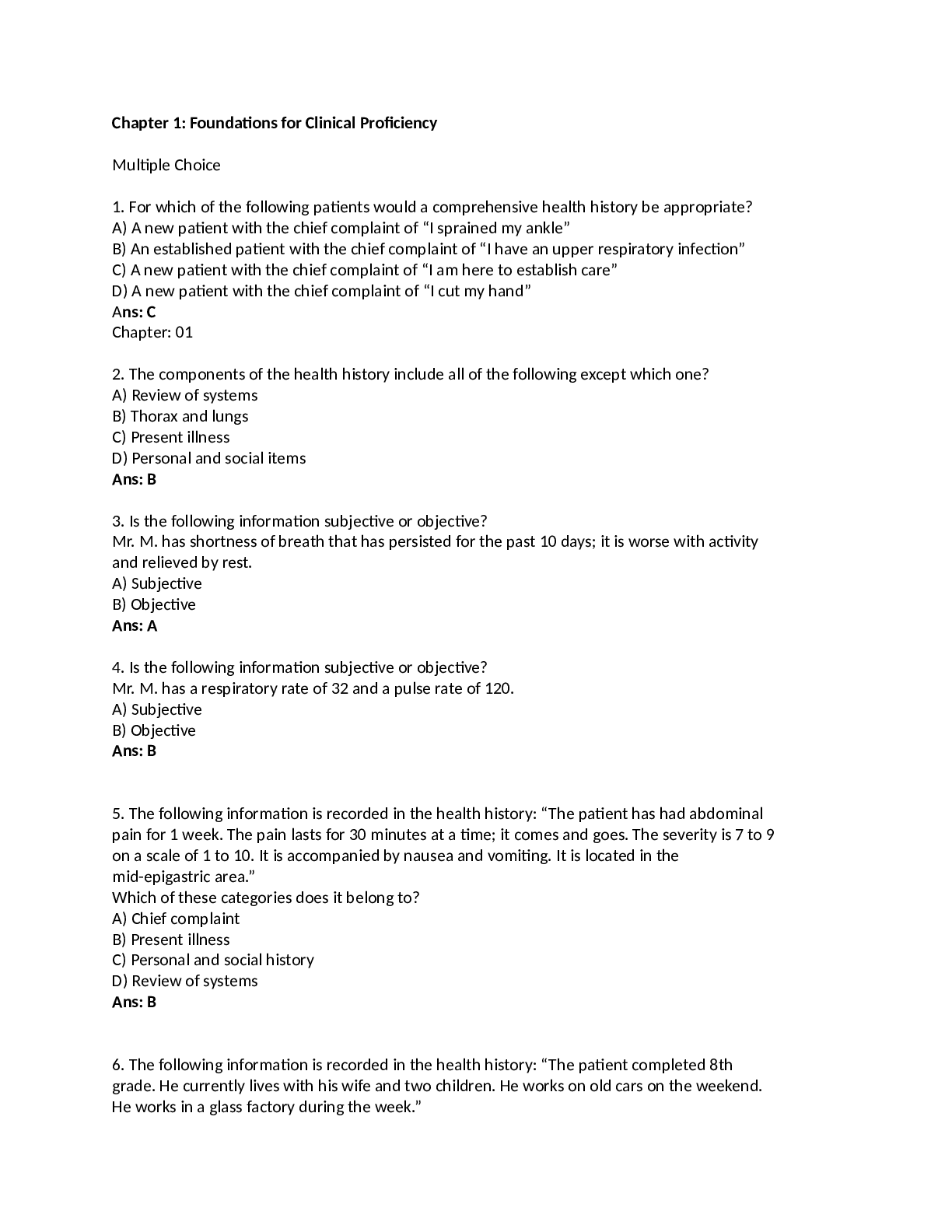

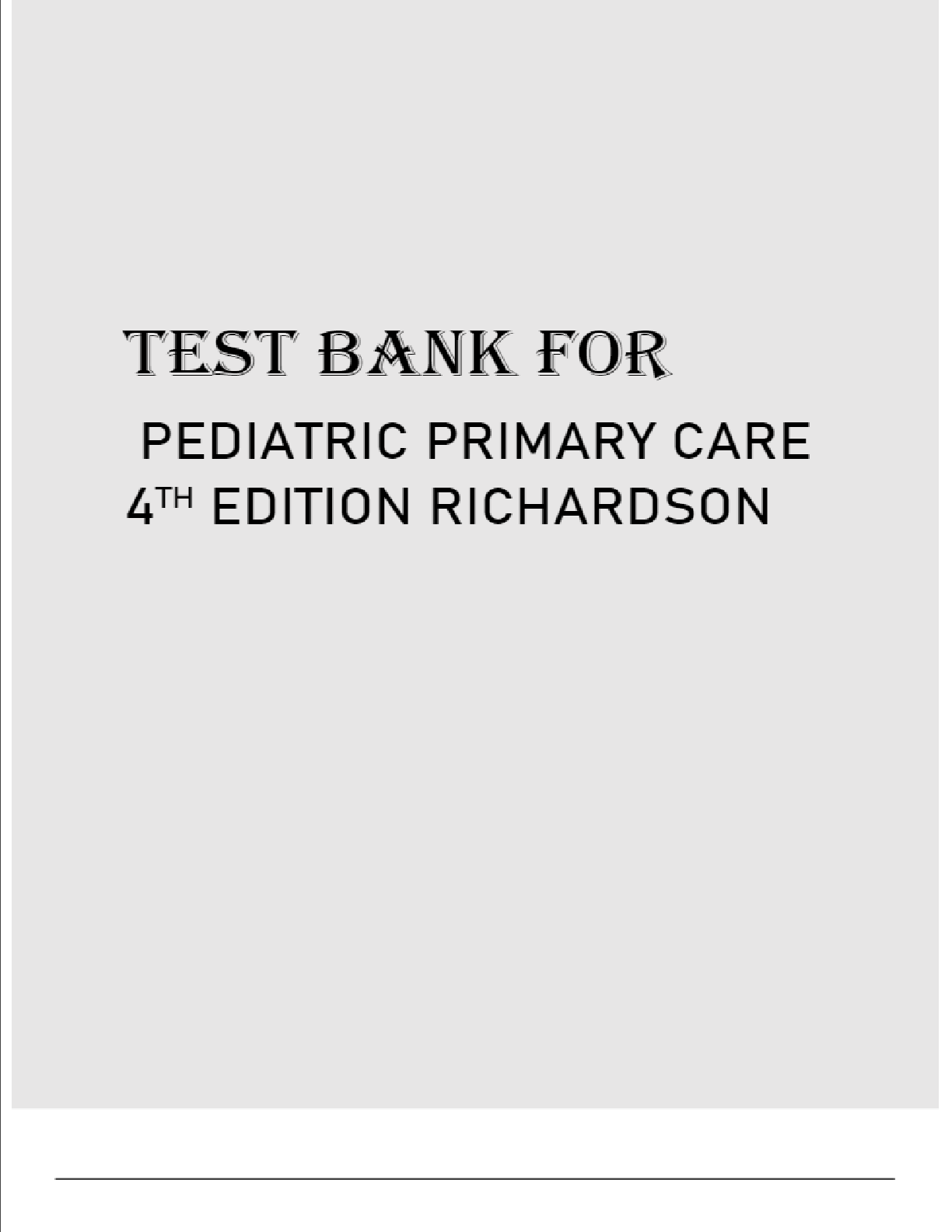





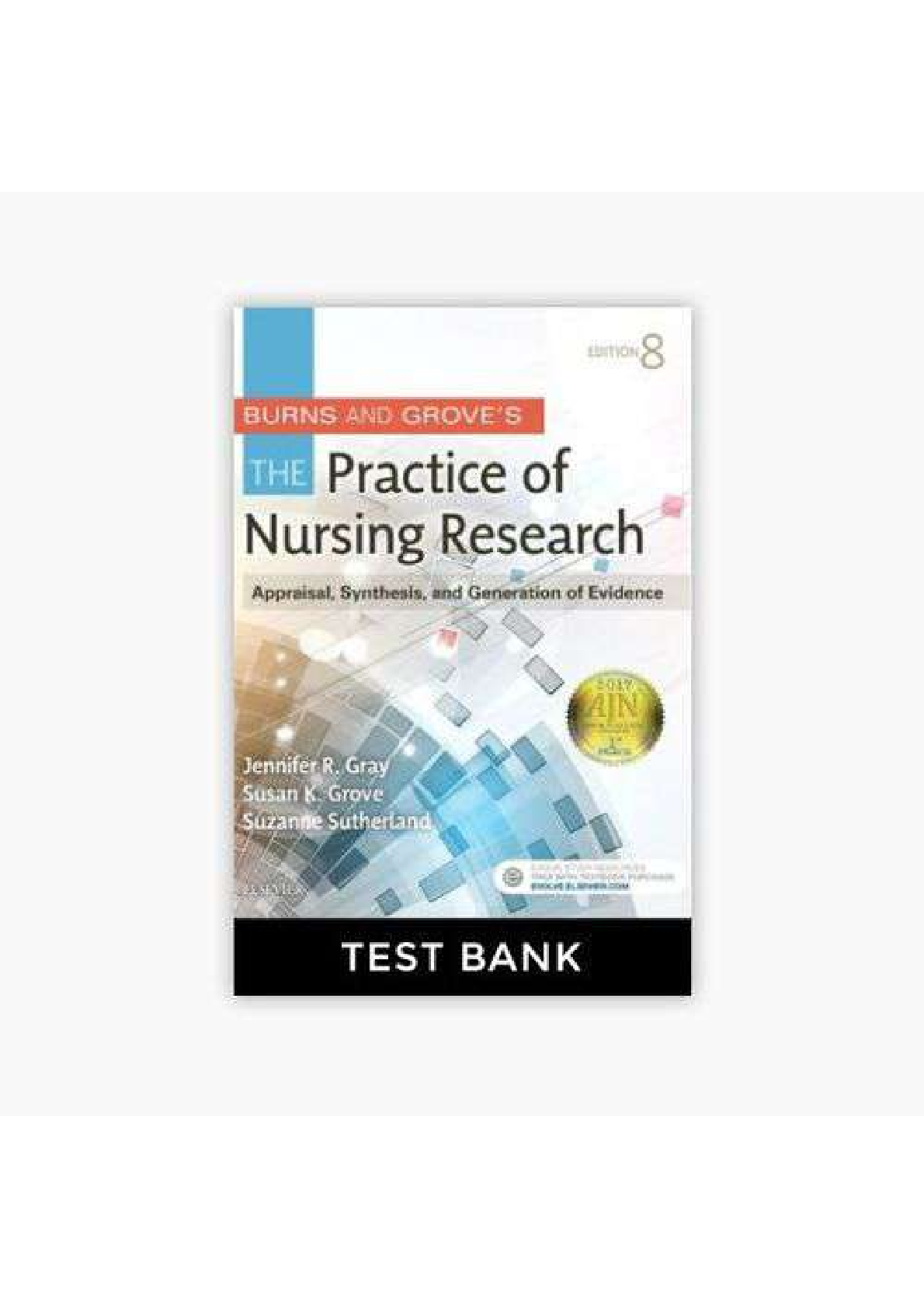
.png)






